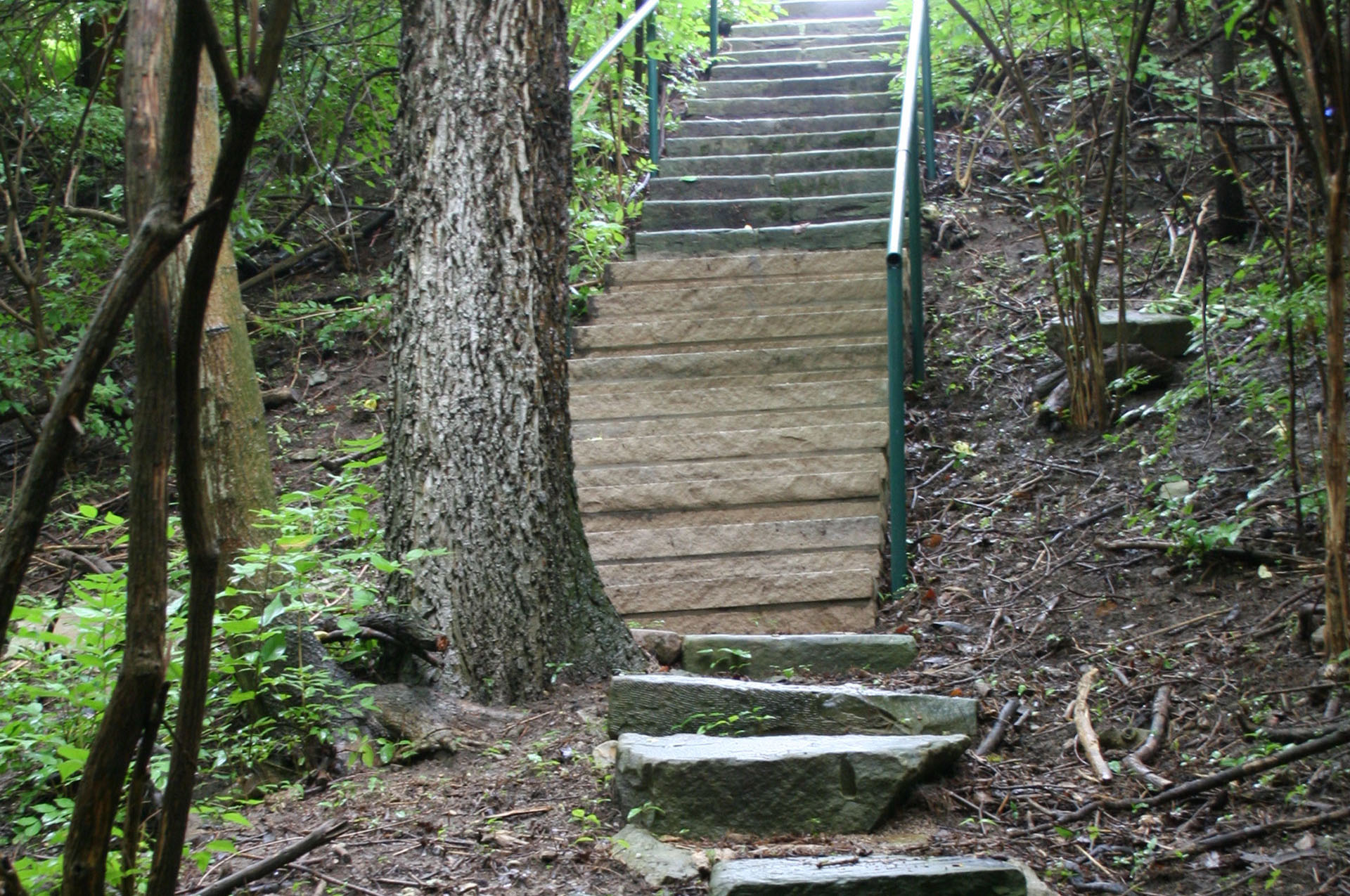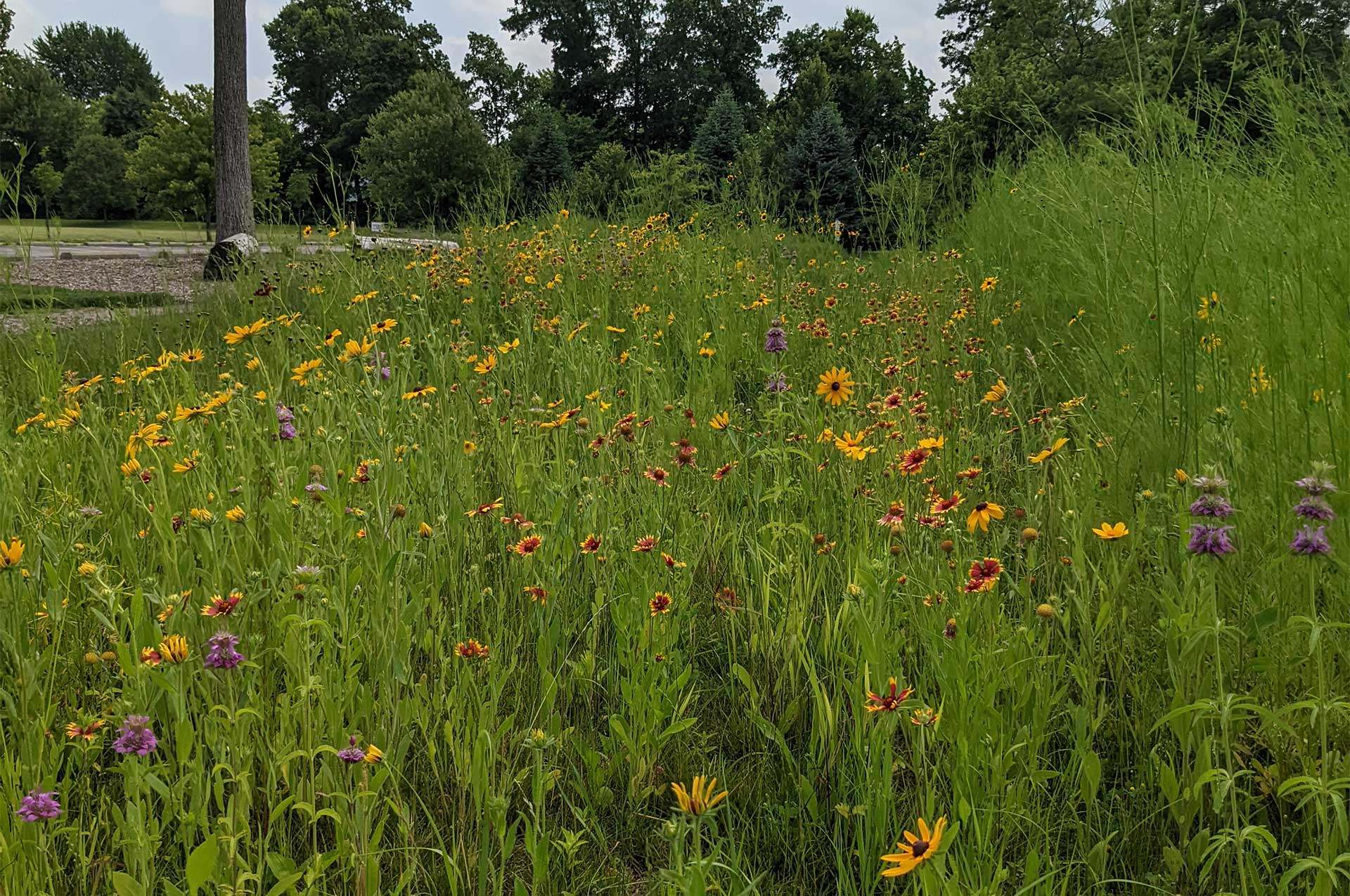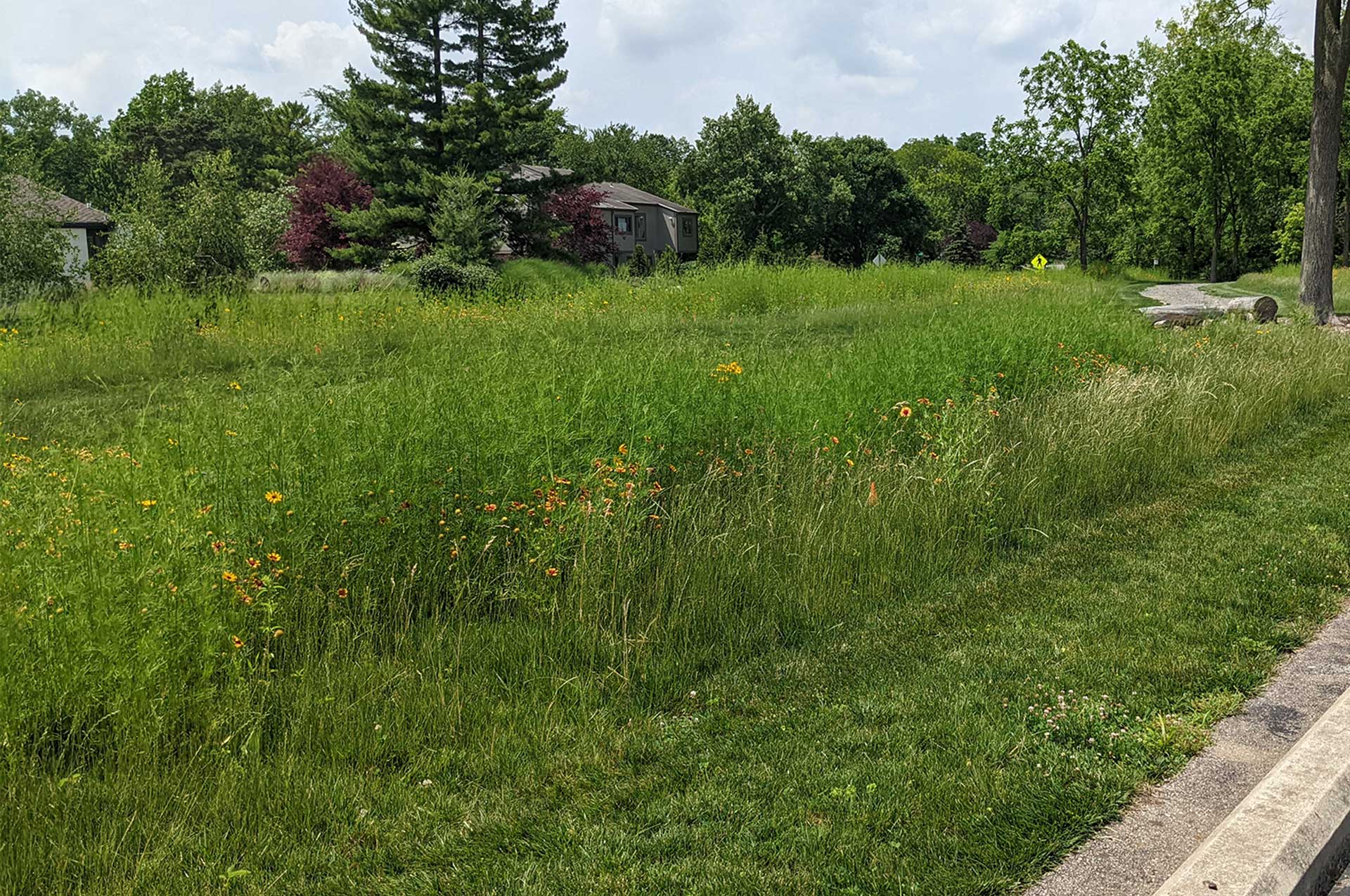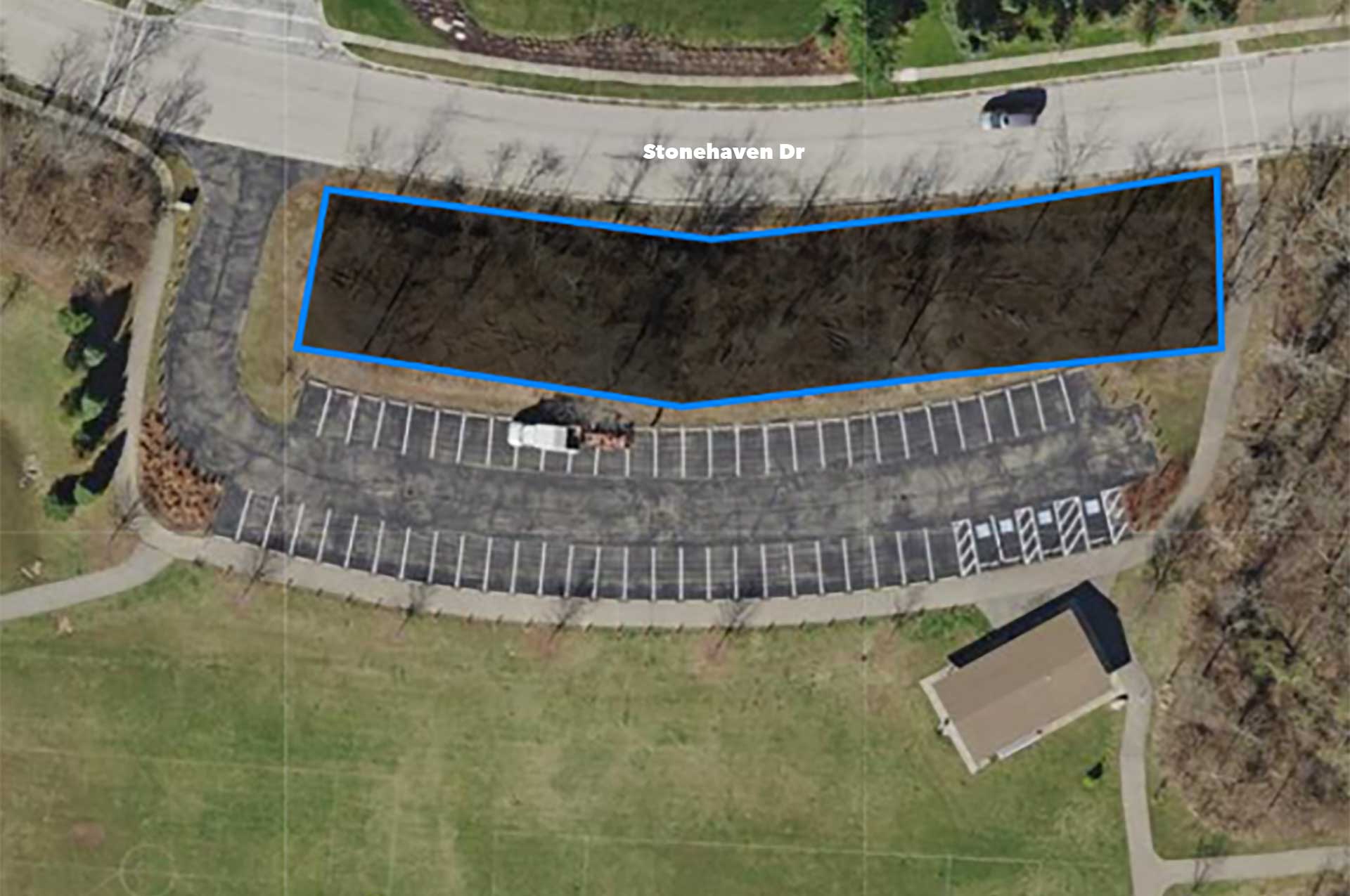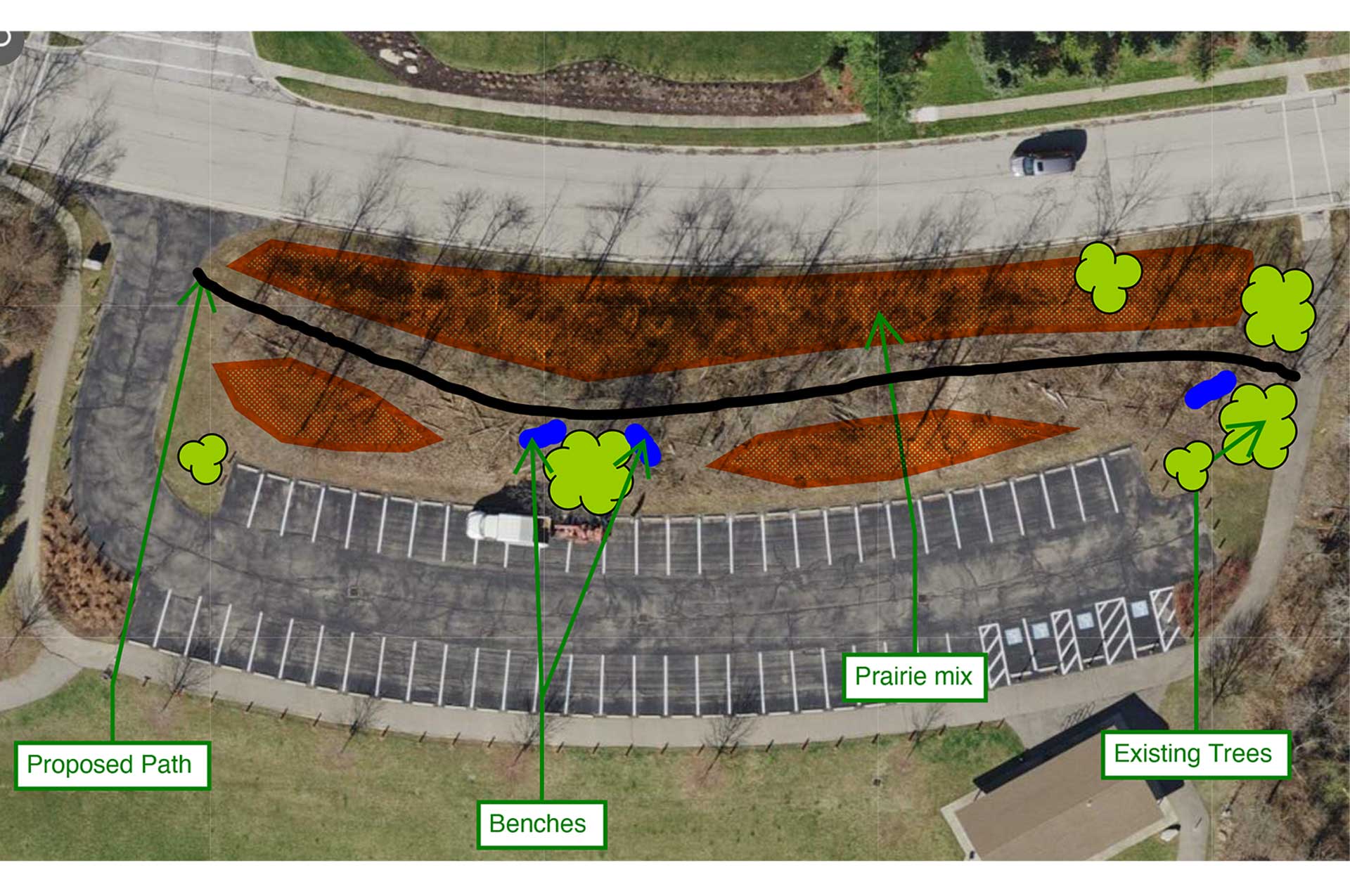
Naturalized areas within the City’s parks include woodlands, wetlands and prairielands. These areas are an important feature of our parks and provide a number of benefits for both park users and the environment.
Park patrons are able to experience:
- The seasonal changes and beauty of natural habitats
- Pollinators and other beneficial insects
- Wildlife and aquatic life
Environmental benefits include:
- Reduction in the maintenance energies required, including staff and equipment
- The provision of habitat for pollinators and wildlife
- The enhancement of ecological diversity
- Mitigation of CO2, the heat island effect, and other urban impacts
Upper Arlington’s park system features a range of naturalized areas, including the wooded Smith Nature and Cardiff Woods parks, and smaller pockets within larger parks, such as the Thompson Park wetlands and Miller Park ravine.
In recent years, the Parks & Recreation Department had already begun setting aside additional portions of land within some parks, allowing them to return to a more naturalized state. Resident feedback obtained for the 2018 Parks & Recreation Comprehensive Plan indicated a desire for increasing the availability of naturalized park trails and the provision of nature education programs. In response, the division is working to improve and expand naturalized areas across the park system.
WHY DO WE NEED TO MANAGE NATURALIZED AREAS?
The urban environment and nature are not necessarily enemies, but they are not allies. Most natural areas exist on disturbed soil, or have been affected by neighboring disturbances, such as construction, adjustments to the flow of drainage, and the installation of utilities.
Natural areas are affected by non-native invasive species. Plant competition from aggressively growing non-native plans species – such as winter creeper, buckthorn, honeysuckle, garlic mustard and lesser celandine – inhibits the succession and growth of native species. Impacts can also come from non-native pests, such as Dutch Elm Disease and the Emerald Ash Borer. In these two instances, the loss of tree canopy from the death of American elm and Ash trees has caused an imbalance in the natural ecosystem, providing greater opportunity for other non-native plant and tree species to take over.
A management plan for these naturalized areas is necessary to mitigate the effects of urban disturbance and to restore and maintain a balanced and diverse ecosystem that is better able to withstand the pressures and effects of any new pests that are on the horizon. Periodic inspections are also invaluable for identifying and addressing any physical hazards, sight clearance issues, and any public health and safety concerns.
WHAT IS OUR MANAGEMENT PLAN?
The Parks & Recreation Department is currently developing a holistic plan that addresses how our naturalized areas are managed. This process includes a review of current locations, conditions and maintenance practices, engaging with park user groups, advisory boards and commissions to receive input, and researching best management practices with various conservation groups and authorities.
From the information gathered, a short- and long-term management plan will be developed, with the goals of efficiently allocating City resources, capitalizing on community interest and support through volunteer activities and student projects, while also educating residents on the benefits of preserving naturalized areas within our parks. Built into the plan will be a periodic review of progress made to determine if any adjustments should be made to maintenance plans.
Successfully cultivating naturalized areas that are impactful and sustainable will take many seasons. In the meantime, there are many things that we can do to positively impact these naturalized areas, such as clearing invasive plant species, and planting native trees and wildflowers.
IDENTIFYING AREAS FOR NEW AMENITIES AND IMPROVEMENTS
A goal is to improve these naturalized areas and enhance the experience for park users by creating and enhancing pockets of oasis and respite within our urban environment. Once progress has been made to control and improve vegetation management, it will be possible to explore options for expanding the available amenities within these naturalized areas. This could include the addition of new trails, trail heads and markers, natural seating, nature play features and outdoor classrooms.
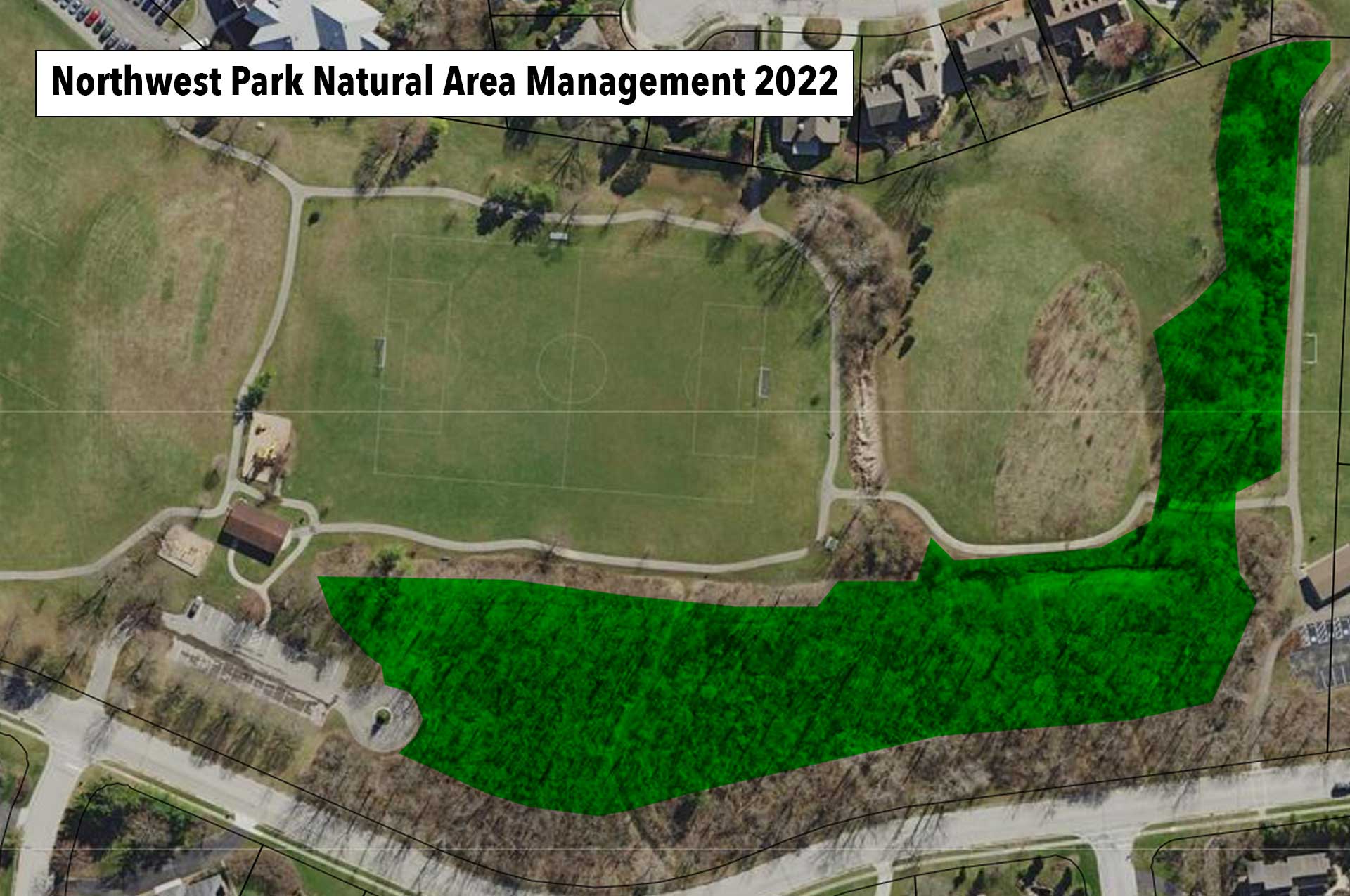
Project Overview
The wooded area along the south boarder of the park and along Stonehaven Drive was decimated by the effects of the emerald ash borer. Once thriving, mature ash trees were replaced by the remnants of dead, dying, and hazardous ash trees, dominated by a thicket of honeysuckle, buckthorn, and multiflora rose. These non-native species are problematic in woodlands all over Central Ohio. They displace native plants and wildlife, and create a thick understory that impedes the reproduction and establishment of native trees.
In an effort to more effectively manage the area described above and return it to its former state of thriving forest, the Parks & Recreation Department has secured a contractor to clear this area of the hazardous trees and undesirable species using a forestry mulcher, over the winter of 2022. We will preserve and maintain as many safe and viable trees as possible. We are taking a phased approach: A strip of existing vegetation along Stonehaven Dr will be maintained so that the neighborhood will still experience a visual and sound buffer from the park. Once plantings of native vegetation are established in the area cleared, we will repeat our efforts along Stonehaven Dr.
This restoration will take time to succeed but, our goal is to return this area to a dense, diverse, healthy and sustainable forest, to incorporate trails and recreational opportunities that are compatible with this naturalized area, and to maintain the park’s dense area of woody vegetation that the neighborhood values so much.
Spring 2022 Update
The contractor has completed the majority of invasive species and hazardous tree removal work but will return for a few punch list items. The mowing chaff or large wood chips will remain, providing erosion control and some suppression to the regrowth of invasive species. This woody debris will naturally decompose and add nutrients to the soil. Staff is currently working on mapping a trail that will complement both this work and future phase. Trail installation will occur this spring and summer. The trail will be lined with logs from the tree removal and will be filled with recycled millings from street projects. The 6-8ft tree trunks were left as snags and will remain to provide habitat for insects and wildlife. Staff will be retaining or adding some larger logs for seating or play opportunities. Many trees are scheduled to be planted this spring by both staff and volunteers:
Balled and burlaped trees
- 15 Chinkapin Oak
- 10 American Basswood
- 10 Swamp White Oak
- 10 Bur Oak
- 10 Tulip Poplar
- 10 Yellow Buckeye
- 10 Sassafras
- 5 Catalpa
Saplings
- 50 River Birch
- 50 Hackberry
- 50 Black Gum
- 50 Sycamore
- 50 Bur Oak
- 50 Shumard Oak
Containerized trees
- 10 Sugar Maple
- 20 Baldcypress
- 10 American Sycamore
- 10 Yellow Birch
- 10 River Birch
- 5 Hackberry
- 5 Silver Maple
- 5 Grey Dogwood
- 5 Silky Dogwood
Live stakes or whips for erosion control
- Willow species
For questions or comments please contact:
Parks & Forestry Superintendent
Phone: 614-583-5361 | Email: [email protected]
PROJECT DESCRIPTION
Winter/Spring 2021
Invasive plants and hazardous trees in the naturalized park area at Miller Park were removed by volunteers from Friends of Upper Arlington Parks (FOUP), City Staff and contractors, in preparation for a significant replanting of native trees and shrubs, which took place in the spring of 2021. The planting list included:
- 10 White Pine trees
- 10 Hemlock trees
- 5 Wildfire Blackgum trees
- 10 Sycamore trees
- 10 Redbud trees
- 5 White Flowering Dogwood trees
- 10 Bald Cypress trees
- 15 Button bushes
- 30 Grow Low Sumac bushes
- 10 Sumac bushes
- 15 Ninebark bushes
- 2 Honey Locust trees
Staff also created and installed new amenities, such as benches and nature play opportunities, using the timber salvaged from some of the recently removed trees.
PROJECT DESCRIPTION
Summer 2022
Prairie in Progress at Burbank Park! Our prairie pollinator habitat project started in winter 2021. A year and a half later and we have a naturalized area that is beginning to thrive. Blooms abound from Wild Bergamont, Brown Eyed Susan, and Lace Leaf Coreopsis. A little later on this season and we will see Purple Coneflower, Sunflowers, and Common Milkweed. Towards fall we will have Little Bluestem, Smooth Blue Aster, and Golden Rod. Our department staff will continually manage and maintain this area for flowers and pollinator habitat. We advise that you visit regularly to see this new and improved naturalized area!
Winter/Spring 2021
The area of Burbank Park (noted by the shaded area in the above image) was identified for improved natural area management.
This area was once a thriving stand of young Ash trees. Unfortunately, over the last decade the non-native invasive pest, the Emerald Ash Borer, killed most of these trees. The resulting loss of canopy from this key forest species created an opening for invasive and nuisance species – honeysuckle, grapevine, multiflora rose, and poison ivy – to take hold. The resulting density of this growth was obstructing the parking lot and shelter from the view of the street and was causing safety concerns.
In early 2021, the Parks & Recreation Department cleared most of the woody plant material from this area, converting it to a combination of turf and pollinator habitat, with the addition of a mulched foot path. Our goal was to manage and provide a safe, inviting and more usable natural space.
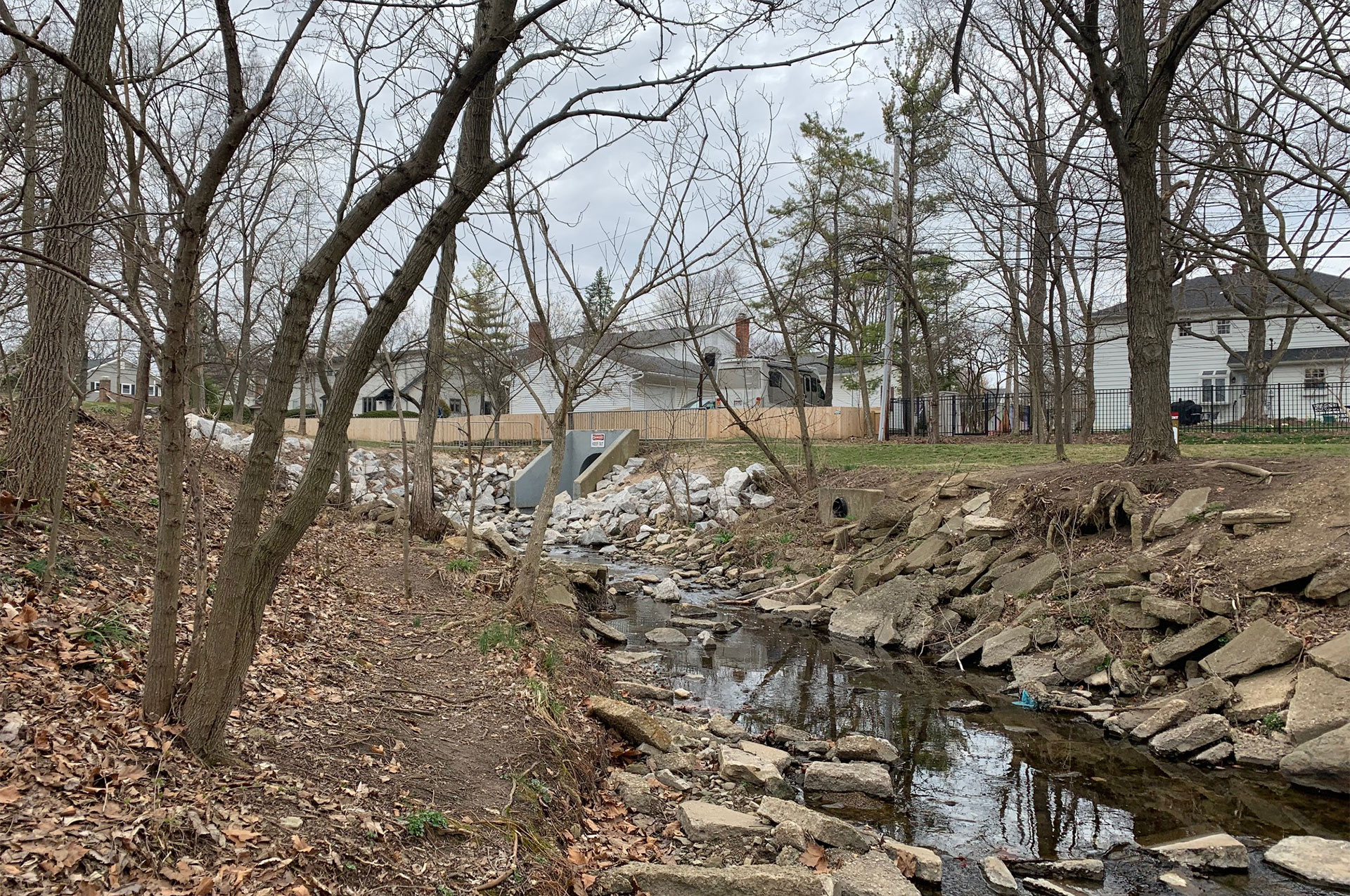
2021-2022 Projects
This project – conducted in two phases – is addressing concerns regarding significant erosion along Turkey Run within Reed Road Park. The 2021 construction included water flow reduction and stone and channel protection to stabilize and reduce erosion approximately 100 feet south of the Lytham Road bridge where Turkey Run enters the park near the playground. Phase 2 is anticipated to be constructed in 2022 and will focus on natural methods for stabilizing the banks of the stream immediately downstream from the Phase 1 work. We anticipating that site work will begin around April 5 and last approximately 90 days. The path connecting the east and west sides of the stream will remain open throughout the majority of the work, except for occasional temporary closures which will be clearly marked.
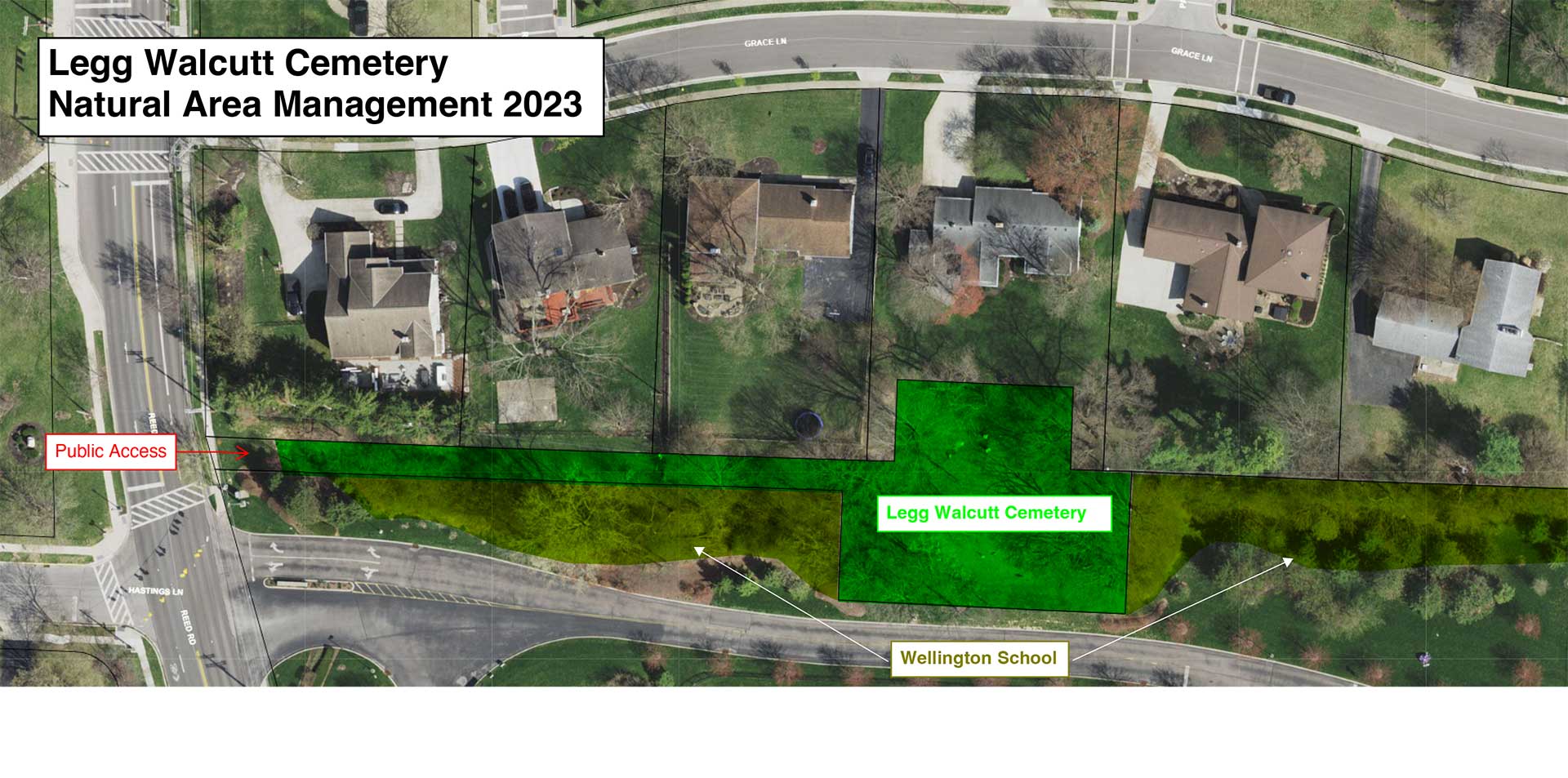
Just off Reed Road, nestled between Wellington School and the residential homes along Grace Lane, is a little known but historic Upper Arlington Property, the Legg Walcutt Cemetery. The land the Cemetery is located on was approximately the middle meeting point of two historic farms: 230 acres belonging to Robert Walcutt (1797-1877) and 100 acres belonging to Thomas Legg (1795- 1888). Gravestones in the cemetery date all the way back to the back to the 1820s. For more info visit //uahistory.org/
Despite the importance of this land, it has not escaped the invasion and effects of honeysuckle. Honeysuckle is a non-native invasive species that out competes native species of plants and provides an inferior food source to native wildlife. In this specific location it also restricts access and inhibits our ability to successfully manage the property and stone markers.
The City is excited to partner with Wellington School and Friends of the Lower Olentangy (FLOW) on a coordinated effort to remove the invasive honeysuckle and plant more native species. The shared goal is to return this area to a naturalized state that supports our native ecosystem, the watershed, and the designated land use.
The City is also planning some complementary work at the cemetery, including a fence to delineate private property, new signage, and some TLC and preventative maintenance to the existing headstones.
If you would like to visit the cemetery or see the project, please be mindful that there is no public access off Grace Lane. Public access is shown on the map as a 10-foot-wide path off Reed Road.

